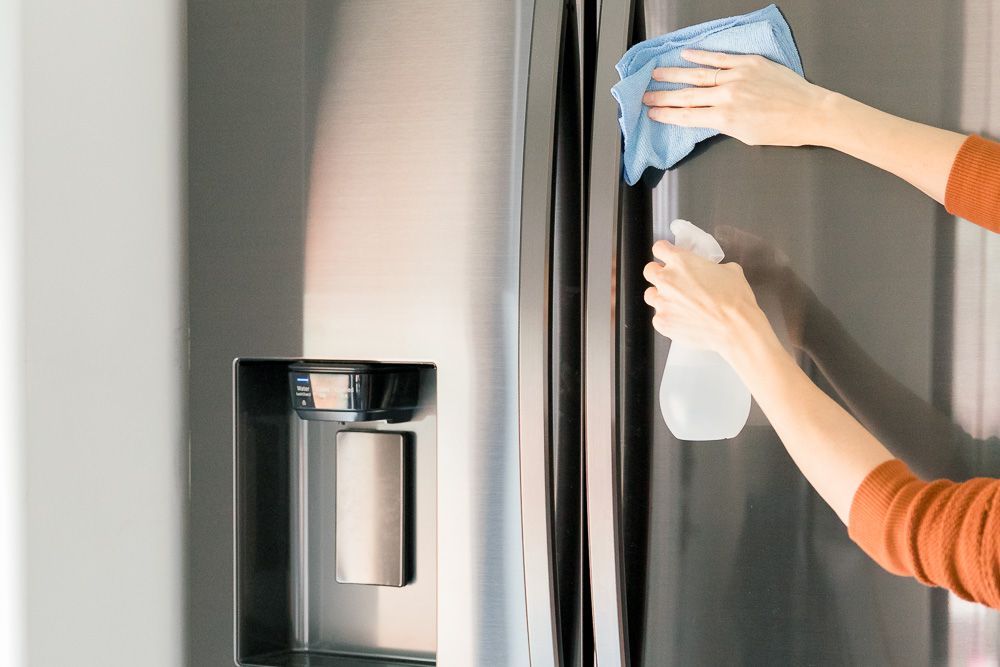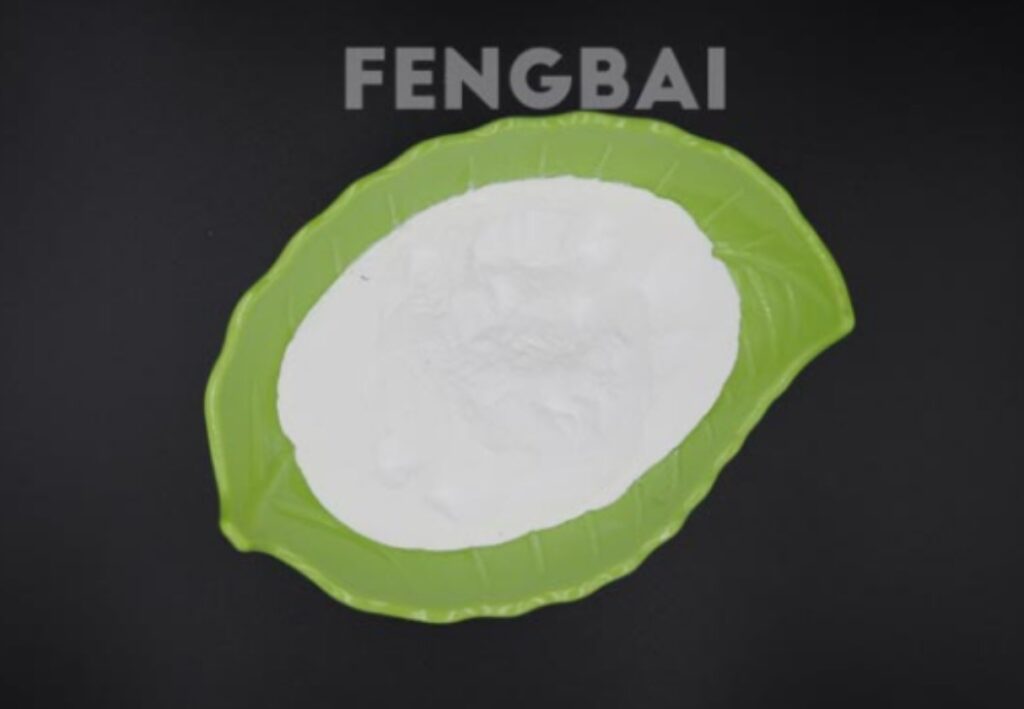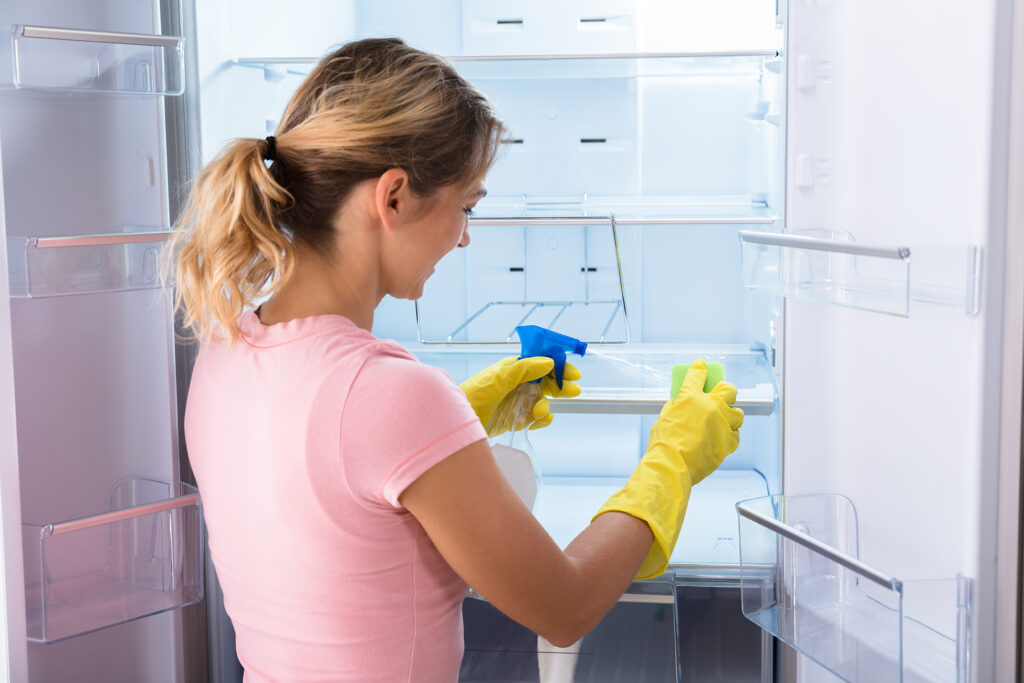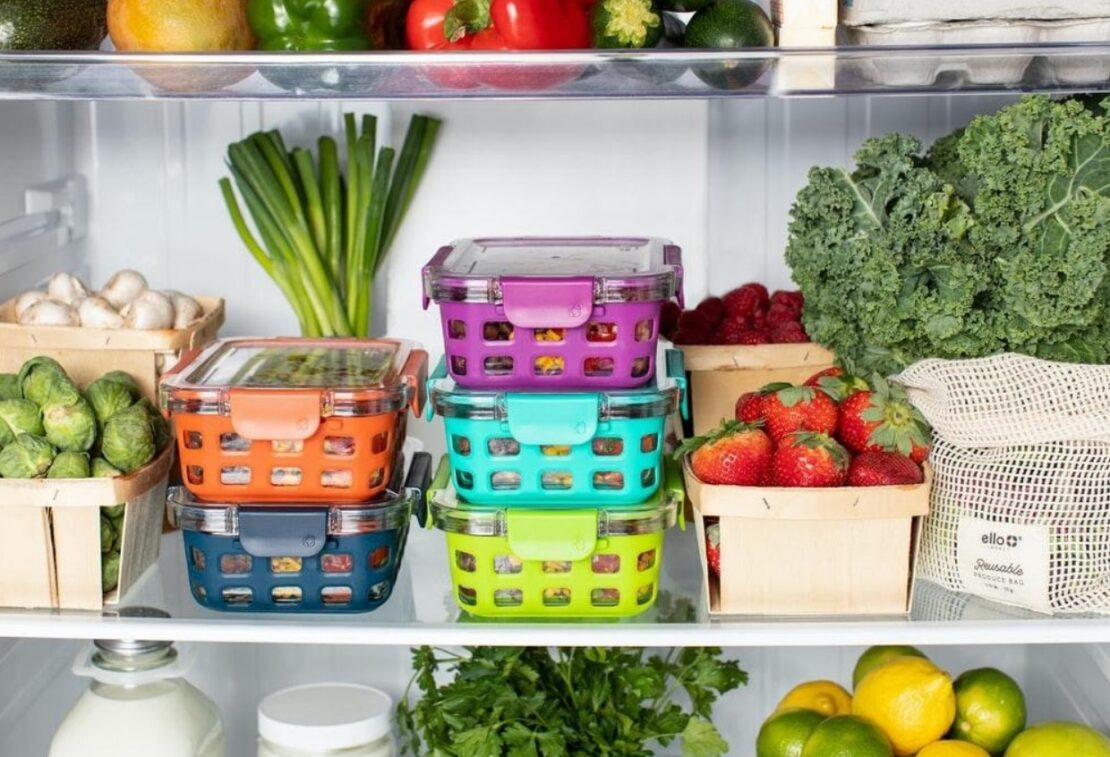With the recent COVID pandemic, people around the globe have realized the significance of thorough disinfecting and cleaning. Maintaining a clean and sanitize surface and household items is crucial to reduce the chances of a spread. One of the most neglected cleaning areas is the refrigerator.
Cleaning a fridge is more than just wiping the exterior and throwing out stale food. It is essential to properly clean your refrigerator with an effective chemical, like NaDCC disinfectant, to do the job. Stale food has the ability to pollute fresh food and fridge surfaces with bacteria and fungus that increase the chances of health issues.
It is essential to know the right steps to properly disinfect the fridge and create a schedule to maintain cleanliness to ensure your health.
Steps To Disinfect and Clean a Refrigerator
Here are the main steps involved in disinfecting your fridge:

Step 1: Remove and Wash the Drawers and Trays
Start by emptying out the contents in the fridge and removing all the shelves and drawers. Wash them with mild soap and water. If they are heavily stained, soak them in the solution for an hour or so. Next, dissolve NaDCC disinfectant in water and clean the drawers and trays to disinfect.
Set them aside on a clean surface to dry before you put them back inside.
Step 2: Clean and Disinfect the Exterior and Interior
Now that the refrigerator is empty, use a dry cloth to wipe the interior and remove any liquid spills. Next, use a mild soap and water in a bowl and clean the interiors using a clean sponge. Take a dry cloth and wipe all the surfaces.
If there are stronger stains remaining on the surface, use a kitchen cleaner to spray on the stains and wipe them clean. Prepare a disinfection solution with water and NaDCC disinfectant. After cleaning the interior, use a clean sponge to wipe the interior surfaces with the disinfection solution.
Now, it is time to clean the exterior of the refrigerator.
You can follow the same steps for interior cleaning. Be sure to use the disinfectant solution at the very end of the cleaning process to leave the exterior completely sanitized.

Step 3: Disinfect the Handles
The handles of the fridge might need more rigorous cleaning as it is touched multiple times a day by various family members. You might require a concentrated solution to get rid of the grease accumulation and dirt deposits.
Combing half a teaspoon of vinegar and dishwashing liquid in a warm bowl of water. Use a clean sponge to dip in this solution and clean the handles of the fridge. Use a dry, clean cloth to wipe away the moisture.
Step 4: The Gasket Comes Next
Lastly, it is time to clean the gasket. Since a gasket is also a place where bacteria, germs, and other dirt deposits can accumulate, it requires thorough cleaning before you disinfect it.
Use the same vinegar and dishwashing solution to clean the whole gasket. Use a dry cloth to wipe it dry. Next, use some drops of lemon essential oil dipped in a soft-bristled brush to clean the rubber and keep it supple. In the end, use the NaDCC disinfectant mixed with water to sanitize the gasket.
It is essential to keep this disinfectant solution in a spray bottle to wipe the exterior surface and handle of the fridge every day. You should also sanitize the fridge after you have cooked a massive amount of food to ensure all the leftovers are used, and no stale food is left behind.

Establishing a Cleaning Schedule
Creating a comprehensive schedule to keep your fridge and food healthy and clean is crucial. You don’t have to conduct an in-depth cleaning each time if you have a proper cleaning routine. Here is an example of the cleaning schedule you can follow, which can be altered depending on your needs:
- Daily Cleaning – when you are cooking, give your fridge a once-over. Wipe away any spilled liquids instantly to make sure it doesn’t leave a stain. Use the disinfectant solution to spray and wipe the handle every day.
- Weekly Cleaning – Sort out all the items in your fridge before going on your weekly grocery runs. Check the expiry date of the food and throw away the expired items. Give away anything that is nearing its expiration and likely won’t be used soon.
- Occasional Cleaning – Once every month or in two months, deep clean your fridge and disinfect both the interior and exterior surfaces using the above-mentioned steps.
You should also deep clean your fridge if you have been traveling if there was a power outage for more than two hours and if any of the food items you had in your fridge were recalled due to any contamination.
Tips To Maintain a Clean Refrigerator
Here are some more useful tips for maintaining a clean and sanitized fridge:
- Lower the risk of any food contamination by storing raw fish and meats on the bottom shelf to prevent any juices from dripping into other food.
- Keep the raw and cooked food separate for the same reason.
- Avoid letting any food grow mold by throwing it away sooner as it can result in the spreading of germs to the other food items.
- Always put away the ingredients once you have used them. Most of the condiments and food jars must immediately be stored in a fridge once opened.
- Clean up any spills as soon as you can to maintain cleanliness.

While disinfecting all the surfaces in the kitchen is significant, keeping your fridge sanitized is one of the most important steps to maintain a clean and healthy household. It certainly feels like a tedious task, but following the right steps and maintaining a cleaning schedule can make things easier while also promoting hygiene.
Daily and weekly cleaning activities and using an effective disinfectant, like NaDCC disinfectant, can ensure that your refrigerator and its contents stay clean and safe for you and your family.





